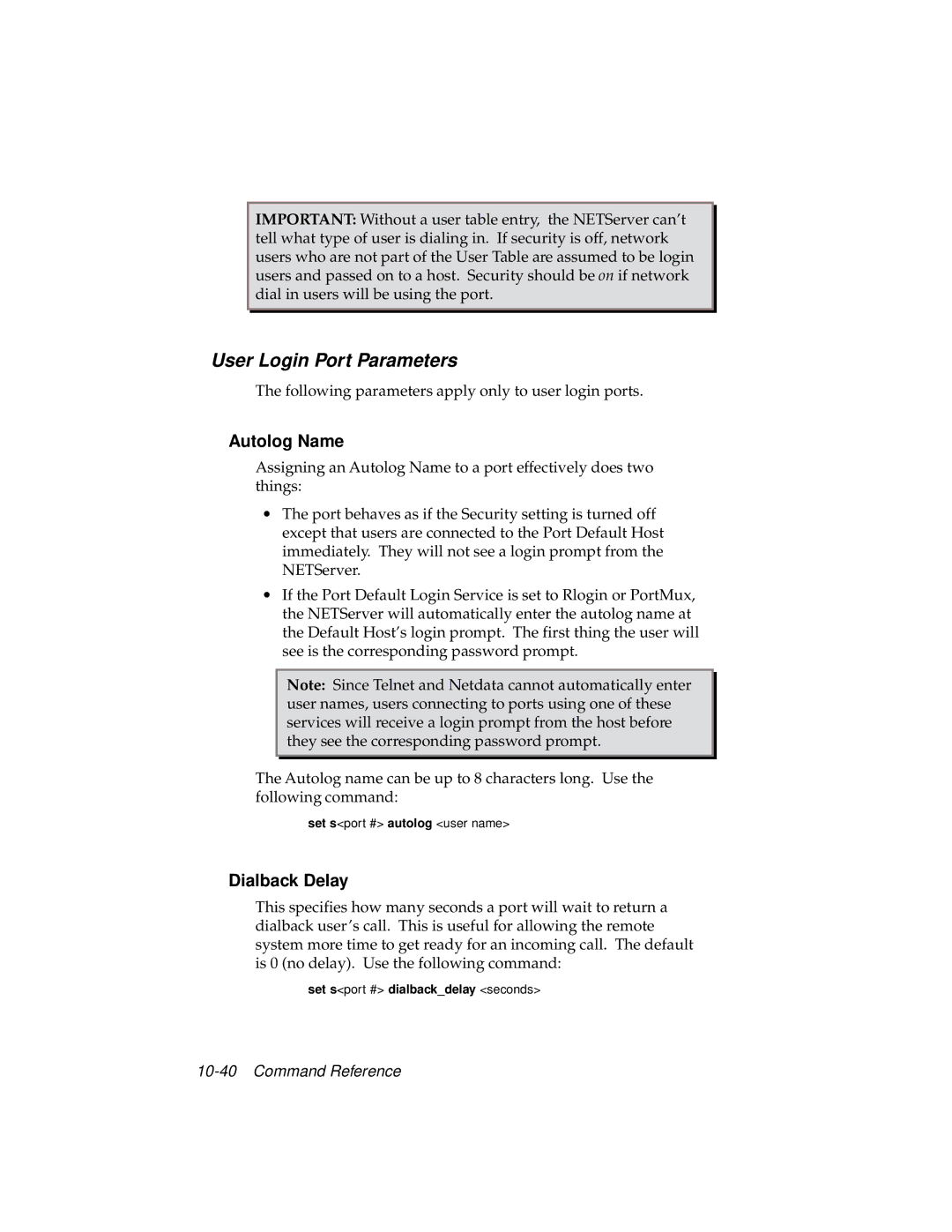
IMPORTANT: Without a user table entry, the NETServer can’t tell what type of user is dialing in. If security is off, network users who are not part of the User Table are assumed to be login users and passed on to a host. Security should be on if network dial in users will be using the port.
User Login Port Parameters
The following parameters apply only to user login ports.
Autolog Name
Assigning an Autolog Name to a port effectively does two things:
∙The port behaves as if the Security setting is turned off except that users are connected to the Port Default Host immediately. They will not see a login prompt from the NETServer.
∙If the Port Default Login Service is set to Rlogin or PortMux, the NETServer will automatically enter the autolog name at the Default Host’s login prompt. The first thing the user will see is the corresponding password prompt.
Note: Since Telnet and Netdata cannot automatically enter user names, users connecting to ports using one of these services will receive a login prompt from the host before they see the corresponding password prompt.
The Autolog name can be up to 8 characters long. Use the following command:
set s<port #> autolog <user name>
Dialback Delay
This specifies how many seconds a port will wait to return a dialback user’s call. This is useful for allowing the remote system more time to get ready for an incoming call. The default is 0 (no delay). Use the following command:
set s<port #> dialback_delay <seconds>
